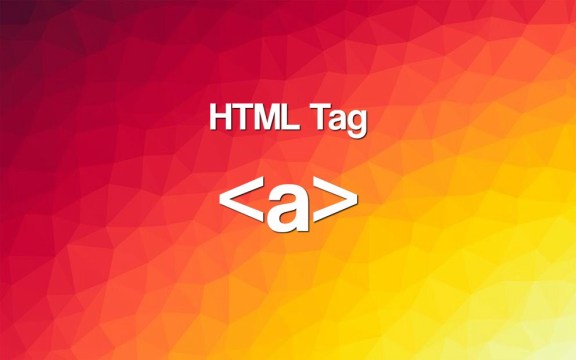<a> tag in HTML: The <a> tag in HTML is used to create hyperlinks. It stands for "anchor" and is commonly referred to as the anchor tag. Here's a basic example of how it's used:
<a href="https://htmlstart.com">Click here to visit HTMLStart</a>
This creates a hyperlink with the text "Example Website" that, when clicked, navigates the user to the URL "https://htmlstart.com". The title attribute provides additional information about the link.
The <a> tag is one of the fundamental elements in HTML for creating navigation and connecting different web pages together.
Syntax and Attributes
Here's the syntax and commonly used attributes for the <a> tag in HTML:
<a href="URL">Link Text</a>
Attributes:
href: Specifies the URL of the page the link goes to. It can also be a URL fragment or an email address.target: Specifies where to open the linked document. Common values include_blank(open in a new tab or window),_self(open in the same frame or window),_parent, and_top.download: If present, suggests that the browser should download the linked resource rather than navigating to it. The attribute value can be a suggested filename.rel: Specifies the relationship between the current document and the linked document. Common values include"nofollow","noopener", and"noreferrer".title: Provides additional information about the link, usually displayed as a tooltip.- Other global attributes such as
class,id,style, etc., can also be used for styling and scripting purposes.
Example:
<a href="https://htmlsmart.com" target="_blank" title="Visit Example">Example Website</a>
In this example:
- The
hrefattribute contains the URL "https://htmlsmart.com". - The
targetattribute is set to "_blank," indicating that the link should open in a new tab or window. - The
titleattribute provides additional information about the link, displayed as a tooltip. - The link text is "Example Website."
This creates a hyperlink that, when clicked, navigates the user to "https://htmlsmart.com" in a new tab or window.
Accessibility Considerations
When using the <a> tag in HTML to create hyperlinks, it's important to consider accessibility to ensure that the links are usable and understandable by all users, including those with disabilities. Here are some accessibility considerations for the <a> tag:
Clear and Descriptive Link Text: Use descriptive and meaningful link text that accurately describes the destination of the link. Avoid using generic terms like "click here" or "read more" as link text. Instead, use text that provides context about the linked content.
Title Attribute: Although not recommended for providing essential information, the title attribute can be used sparingly to provide additional context or clarification about the link. However, ensure that the information provided in the title attribute is also available in the link text or surrounding content.
Focus Styling: Ensure that links receive a visible focus indicator when they are navigated to using the keyboard. This helps users who rely on keyboard navigation to identify which link is currently focused.
Keyboard Accessibility: Ensure that all links are keyboard accessible. Users should be able to navigate to and activate links using only the keyboard without relying on mouse interactions. This includes ensuring that links can be accessed using the Tab key and activated using the Enter or Space keys.
Contrast and Color: Ensure that link text has sufficient color contrast against its background to ensure readability, especially for users with low vision or color vision deficiencies. Avoid relying solely on color to convey the link's status or importance.
Visited Link Styling: Provide clear visual cues to indicate visited links. Users should be able to distinguish between visited and unvisited links to understand their browsing history and navigate effectively.
Link Context: Ensure that the context surrounding the link provides sufficient information about its purpose and destination. Users should be able to understand the function of the link based on its context within the content.
Link Behavior: Avoid changing the default behavior of links unless absolutely necessary. For example, opening links in new tabs or windows without user consent can be disorienting for some users. If such behavior is required, provide clear indications and options for users to control link behavior.
By considering these accessibility considerations, you can ensure that links created using the <a> tag are accessible and usable by all users, regardless of their abilities or assistive technology usage.
→ Utilizing the <abbr> HTML Tag (syntax, attributes, compatibility)
Compatibility and Browser Support
The <a> tag is one of the core elements of HTML and enjoys widespread support across all modern web browsers. Here's an overview of its compatibility and browser support:
Compatibility:
- HTML4: The
<a>tag has been a part of the HTML specification since HTML 2.0 and is widely supported in HTML4. - HTML5: It continues to be a fundamental element in the HTML5 specification, retaining its compatibility with modern web standards.
Browser Support:
- Chrome: Fully supported.
- Firefox: Fully supported.
- Safari: Fully supported.
- Edge: Fully supported.
- Internet Explorer: Fully supported since IE6.
The <a> tag is recognized by all modern web browsers and is rendered appropriately. It's one of the primary means of creating hyperlinks in HTML documents and is essential for navigation between web pages.
While browser support is excellent for the basic functionality of the <a> tag, styling and behavior may vary slightly across different browsers. However, these differences are typically minor and can be addressed with CSS for consistent presentation.
In summary, the <a> tag is universally supported across all modern web browsers and is an essential element for creating hyperlinks and enabling navigation in HTML documents.
